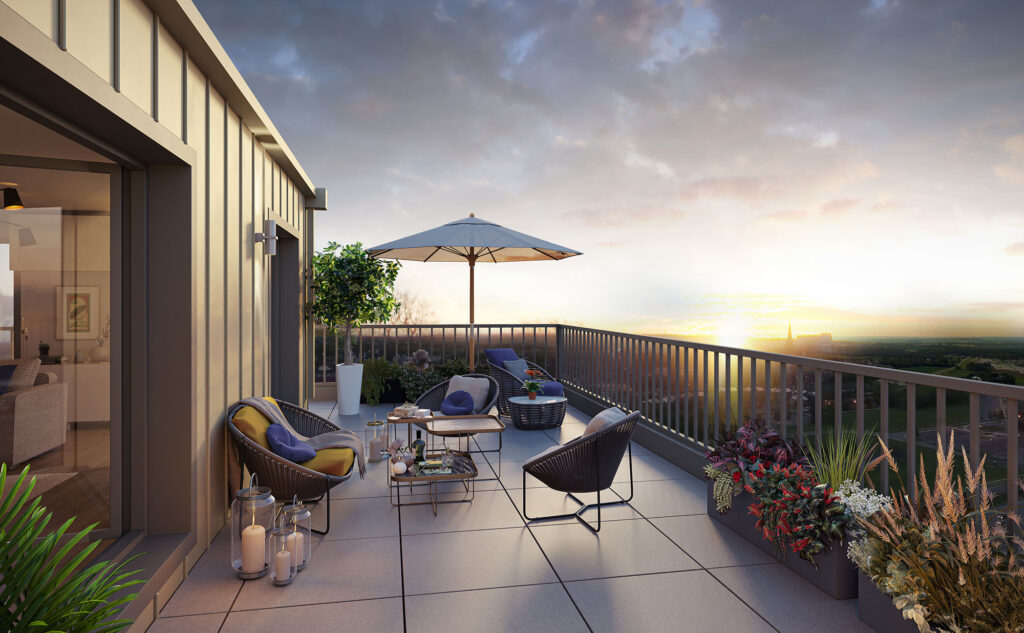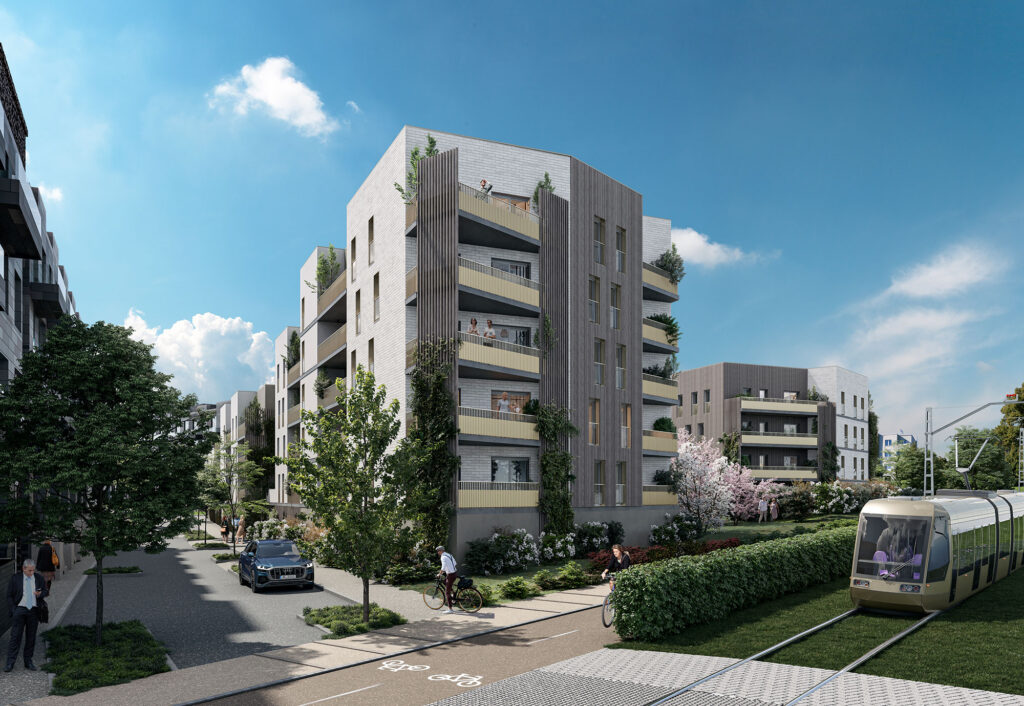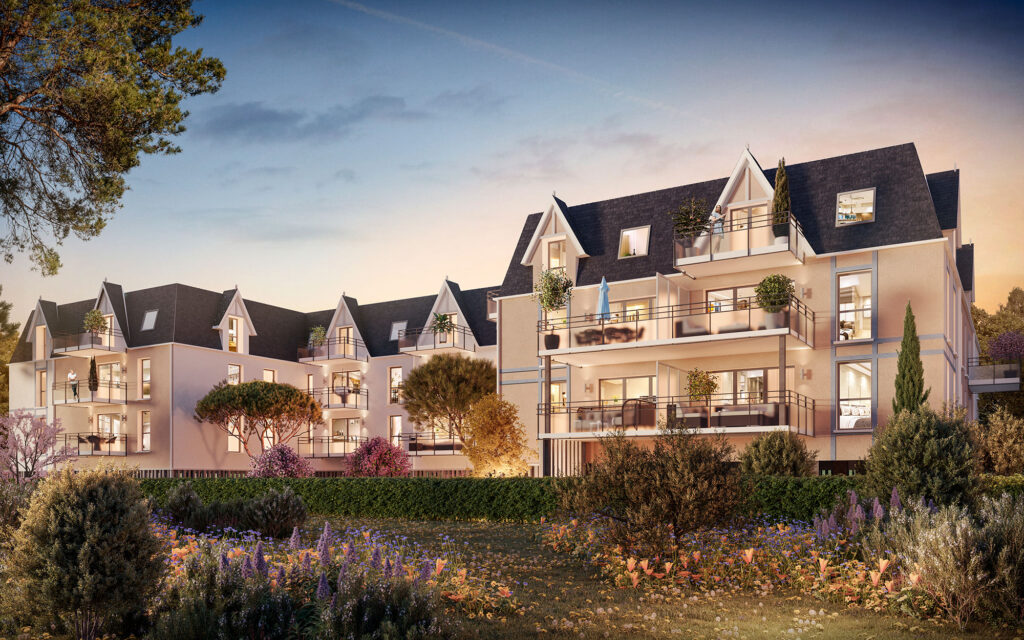The growing advent of 3D and its accessibility have dramatically changed the real estate landscape, both in terms of the buying process and accessibility. This technology has revolutionized the way property is marketed. Now, buyers are looking to become actively involved in the design process and customize every detail of buildings to suit their needs. Focus on the impact of 3D on personalization and customer expectations.

Why does 3D modeling influence customer expectations?
New 3D technologies have significantly shaped customer expectations.
3D modeling and AI
The integration of artificial intelligence (AI) into 3D modeling has made it possible to create models that meet every expectation, from the simplest to the most complex. It offers a variety of creative possibilities. AI's ability to manage a whole range of data ensures that different renderings can be designed with remarkable, close-to-reality precision. Its sophisticated algorithms produce authentic designs faster, based on the information provided.
For example, a customer wants an open kitchen with marble countertops and dark wood cabinetry. AI-powered 3D modeling software automatically creates accurate renderings of this design based on the data supplied. This automation dramatically reduces design times while guaranteeing customized models.
AI can also be used to simulate space use scenarios, taking into account factors such as pedestrian traffic and compliance with accessibility regulations. This is a major help in visualizing and coordinating the various phases of the project.
Technological innovation
Technological innovation has considerably influenced customer expectations in terms of personalization. They are no longer content to look at still images or pre-recorded videos of properties. Instead, they demand an immersive, interactive experience that enables them to make more informed decisions about their future property purchases. As a result, real estate professionals, especially developers, need to adapt.
Technological advances include advances in sensors, rendering software and virtual reality. For example, virtual reality (VR) and augmented reality (AR) have enabled buyers and investors to virtually explore properties before making a financial commitment. They offer them a realistic immersion in real estate spaces.
Buyers can now project themselves into their future home and give more precise indications, according to their needs. This may involve adding a detail, modifying a texture, relocating a piece of equipment or other. Depending on feedback, improvements can be made immediately. Advances in 3D make it possible to quickly modify layouts, colors and details, without having to do it manually.
Competition in real estate
Competition in the real estate sector has had a considerable impact on customer expectations, especially those of investors, and this has led to a growing interest in solutionsthat stand out from the crowd. As a result, they are looking for solutions that enable them to understand every aspect of a property. The personalization offered by 3D is proving to be an effective response to their expectations.
It faithfully recreates the interior and exterior spaces of properties. For example, an investor wants to invest in a new apartment building in a booming neighborhood. He wants to ensure that the project is unique and original to attract tenants and potential buyers.
Among other things, it can create realistic, detailed renderings of the building. It offers investors immersive visualization of interior spaces, and even exterior features such as gardens, terraces and leisure areas.

How does 3D modeling enhance customization possibilities?
It's now easier and quicker to customize the 3D models to be visualized according to each specificity provided in the specifications.
Creation of models to meet the needs of real estate developers
The creation of customized 3D models has become accessible thanks to 3D. Real estate investors and buyers can look forward to quality visualization. The computer graphics artist creates precise representations of materials, colors, the roof and other criteria.
In the case of a real estate development project on uneven or irregular terrain, 3D modeling has the advantage of creating accurate representations. In particular, it lets you know how buildings will be integrated into the landscape. For example, advanced 3D modeling tools can take into account terrain slopes, existing trees and watercourses. This technique makes it possible to design buildings that blend harmoniously into the environment while meeting the needs of future residents.
Advanced customization
By enabling renderings to be viewed and adjusted in real time, 3D modeling transforms the real estate buying experience, offering greater personalization and a better understanding of the future property. Customers are no longer content with a simple visualization, and are increasingly looking for ways to personalize their property. This is precisely where the 3D configurator comes in, a tool that allows buyers to make modifications and adjustments directly on the 3D rendering.
Let's take an example: a customer can test different options for furnishing a room, such as sofas of different sizes or tables of different shapes. He can then respond to his own requests using the configurator's options, helping him to make the space his own. Similarly, the customer can ask to merge two rooms into one large one. With the help of 3D modeling, he can see how this would change the layout of the space and determine whether it suits his needs.
Speed of execution
In a society where time is money, customers have growing expectations in terms of production times and rendering quality. 3D modeling offers considerable advantages in terms of speed of execution.
Software specializing in the creation of 3D objects is equipped with advanced features for the rapid production of creative scenes. For example, the parametric modeling tool in SketchUp and the primitive modeling system in 3ds Max enhance the productivity of computer graphics designers. This enables them to produce high-quality scenes with a high-definition finish more quickly.
However, the skills and expertise of a graphic designer are essential to produce quality renderings and meet the growing expectations of consumers.
Get customized 3D renderings.
CTA








